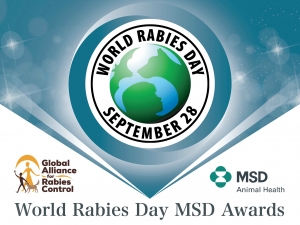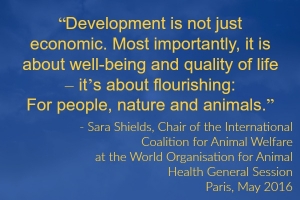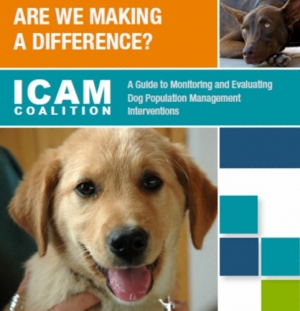Displaying items by tag: Stray Control
Guest Post: Convening diverse stakeholders, finding solutions to better animal welfare
Events We’re Watching this October
World Rabies Day: Nominate a Rabies Champion
Rabies has been around for over 4,000 years, and has one of the highest fatality rates of any disease – it is almost always fatal. Nowadays, it is entirely preventable with modern vaccines and, by rights, it should be consigned to the history books. However, rabies is still at large and causing terrible suffering, mostly in marginalised and impoverished communities.
Watch this Space: Notes on Animal Welfare and the World Organisation for Animal Health (OIE) 2016 General Session
At the end of May I attended the OIE’s 2016 General Session on behalf of WAN, which was one of a number of international animal protection organisations representing the International Coalition for Animal Welfare (ICFAW).
World Animal Net Releases New Report on Stray Dog Population Management
At World Animal Net, one of the most frequent emails we get comes from people traveling abroad who have encountered stray dogs and are concerned for their welfare. High profile cases of abuse of stray dogs by municipal and country governments have made headlines in past years from Romania, Russia, and Brazil, to name just a few. And in India, the problem of dog-mediated rabies has reached such a fever pitch that killing stray dogs is again being considered, though the country banned the practice in 2001.
What’s your view? How can ICAM improve the DPM guide?
The International Companion Animal Management (ICAM) Coalition was formed to facilitate the sharing of learning between some of the largest international animal welfare NGOs that invest in dog and cat population management. We were conscious that we faced many similar challenges and, by putting our heads together, we could forward our understanding and therefore improve our impact on animals. As a result of our earliest meetings, we developed a guidance document that distilled our shared knowledge on dog population management. The ICAM ‘Humane Dog Population Management Guidance’, or the ‘DPM guide’, was released in January 2007 (you can access a copy in several languages from the first item in the ‘Downloads’ window on our ICAM website).
Are We Making a Difference?
Many of us work long and hard to help dogs, and the communities they live amongst, to live in a more harmonious coexistence. Whether through sterilisation, vaccination, persuading owners to take better care of their dogs or rehoming the unwanted; these, and many other activities, fall under the banner of humane dog population management (DPM). But how do we know we are actually making a difference? This can be a very hard question to ask. It’s tough to find we are not making the difference we aimed for, but surely it’s better to know that now and change our approach than waste our efforts without benefiting the dogs? And if we are making a difference, imagine how powerful concrete evidence of that difference could be? We could gain greater security in funding, stronger support from governments leading to policy and legislative change, and a more engaged and appreciative public.
Stray Dog Control: Let’s Ramp up Animal Protection Advocacy!
World Animal Net has just sent out for comment a new draft report on stray dog control. Oh no ... not another stray dog control report, you may think?! But this one is based on new research, and takes a fresh approach: It examines the content, implementation and practical impacts of the OIE’s international standard on stray dog control – and includes recommendations for advocacy by animal protection organisations.
This project has caused me to reflect on the painfully slow progress of rolling out humane stray control measures across the world. Just why is this, when the main principles of stray control have been known for more than 15 years?








